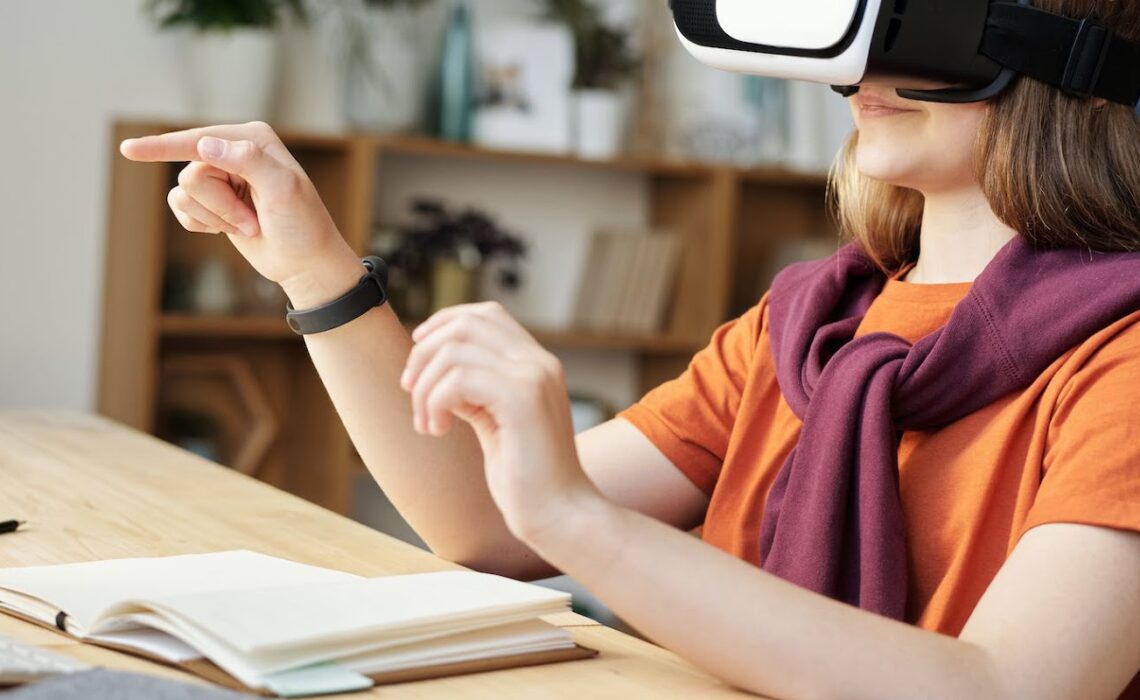
With its immersive experiences—once thought to be only dreams—virtual reality (VR) has become a disruptive force in several industries. VR has great potential in several areas, including interpreter training. In our increasingly globalized world, there is a growing need for qualified interpreters, and virtual reality technology offers a special chance to transform the way interpreters are taught. In this blog post, we will look at virtual reality’s potential applications in interpreter training and how it is improving the educational process for those who want to become interpreters.
Understanding the Current Challenges
Before exploring VR’s potential in interpreter training, it is important to recognize the difficulties that conventional approaches face. Traditional interpreter training frequently consists of classroom instruction enhanced by hands-on practice. Although these approaches are beneficial, they might not be sufficient to give students exposure to a variety of situations and real-world experiences.
Furthermore, particularly for less widely spoken languages, access to qualified instructors and language-specific resources may be restricted. Aspiring interpreters find it difficult to learn and develop their language and cultural competencies as a result of this scarcity.
The Promise of Virtual Reality
Virtual reality provides an answer to numerous difficulties that arise with conventional interpreter training techniques. Virtual reality (VR) offers learners a safe and controlled environment in which to practice their interpreting skills by simulating real-world scenarios through immersive environments. With the use of this technology, students can be transported to a variety of locations, including courtrooms, business meetings, and medical facilities, where they can get firsthand experience with a range of interpreting difficulties.
Moreover, by exposing students to native speakers and real language usage, virtual reality can help with language immersion. The exposure is highly beneficial for enhancing both language proficiency and cultural awareness, which are necessary for efficient interpretation.
Enhancing Language Acquisition
Among the many benefits of virtual reality for interpreter training is its capacity to improve language learning. Repetitive exercises and rote memorization are common components of traditional language learning methods, which may not adequately engage students or reflect language use in everyday situations.
By comparison, virtual reality (VR) provides an engaging and dynamic learning environment where students can hone their language skills in real-world scenarios. Through natural interaction with virtual characters and environments, learners can enhance their pronunciation, grammar, and vocabulary. This immersion method of language learning promotes increased fluency and retention, which results in more skilled interpreters.
Simulating Real-World Scenarios
Photo by Julia M Cameron
The ability of virtual reality (VR) to replicate real-world scenarios with previously unheard-of realism is another intriguing feature for interpreter training. Learners may not be exposed to real-world interpreting scenarios in traditional training environments, like consecutive interpretation in a court case or simultaneous interpretation in a high-stress conference.
With virtual reality (VR), students can fully immerse themselves in these situations and hone their abilities in a risk-free, realistic setting. They can get immediate feedback on how they performed, pinpoint their areas of strength and weakness, and adjust their interpreting methods accordingly. Gaining practical experience is crucial for developing one’s self-assurance and interpreting skills.
Expanding Access to Training Resources
Having access to qualified teachers and language-specific materials is one of the biggest obstacles to interpreter training, especially for languages that are not as widely spoken as others. Virtual reality (VR) has the potential to break down these barriers by giving students access to language-specific content and virtual classrooms regardless of where they are in the world.
Students can collaborate on projects, take part in interactive lessons, and communicate with peers and teachers globally via VR platforms. Virtual reality (VR) can also house an extensive collection of language resources, such as native speaker recordings, vocabulary drills, and cultural immersion activities. Because of its accessibility, interpreter training is made more accessible to all, and prospective interpreters are given the tools and resources they require to be successful.
Challenges and Considerations
Virtual reality (VR) has enormous potential for interpreter training; however, before it can be widely used, several issues and concerns need to be resolved. Certain learners and institutions may face obstacles to entry due to technical constraints, such as the high expense of virtual reality equipment and the requirement for the creation of high-quality content.
Furthermore, the success of interpreter training depends on guaranteeing the cultural sensitivity and authenticity of VR scenarios. To create accurate and respectful representations of diverse linguistic and cultural contexts, developers must work in tandem with language experts and cultural advisors.
Conclusion
With its ability to replicate real-world situations, improve language acquisition, increase access to training materials, and offer a transformative learning experience, virtual reality has enormous potential for the future of interpreter training. Aspiring interpreters can acquire the abilities and cultural competences required for success in a globalized world by utilizing VR technology.
Virtual reality (VR) has the potential to completely change interpreter training by enabling students to become skilled, self-assured interpreters who can cross language and cultural barriers as it develops and becomes more widely available.
For those who are looking for additional support, Unspoken Language Services offers interpreting services to help bridge the communication gap between the deaf and hearing communities.
Photo Credit to: Photo by Julia M Cameron

